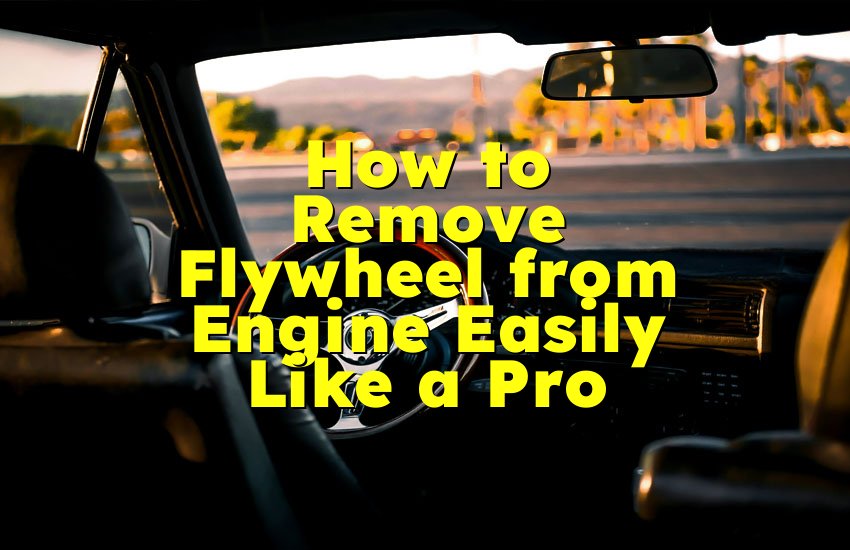As an Amazon Associate, I earn from qualifying purchases at no extra cost to you.
How Long to Run Engine After Adding Coolant? Complete Guide for Beginners
You just added coolant to your car, and now you’re wondering, What should I do next? Well, you’re not alone! This is a common question that many drivers have. Coolant is super important for keeping your engine cool and safe. But if you don't run your engine long enough after adding it, your car might not work the right way. In this article, you'll learn exactly how long to run your engine after adding coolant, why it matters, and what happens if you don't do it right.
Why You Should Run the Engine After Adding Coolant
After adding coolant to your car, it’s very important to run the engine. This helps the coolant move through the entire system. You don't just pour it in and forget about it. Your car needs help spreading the coolant to protect the engine from overheating. Let's look at why this step is so important in detail.
Helps Remove Air Pockets
When you pour coolant into your car, there can still be air stuck inside the cooling system. These are called air pockets. If you don't get rid of these air pockets, they can block the coolant from flowing the right way. This can make your engine overheat, even if you added enough coolant. Running the engine helps push the air out and lets the coolant flow smoothly through the engine, radiator, and heater core.
Air pockets usually form when the coolant level gets too low or after you drain the system. If these pockets stay in the system, they can create hot spots. These are areas in your engine that don’t get cooled properly. Over time, this can hurt the engine. Running the engine warms up the coolant and lets it move through every part of the system. That's how it pushes the air out.
Helps the Thermostat Open
Your car has a small part called a thermostat. It stays closed when your engine is cold. When the engine warms up, the thermostat opens to let the coolant move through the radiator. If you don't run the engine, the thermostat might not open. That means the coolant you just added won't reach every part of the system.
The thermostat usually opens when the engine reaches a certain temperature. This is usually around 195°F (90°C). Until that temperature is reached, the coolant stays in the engine and doesn't move to the radiator. By running the engine, you give it time to get warm enough. That's when the thermostat opens and lets the coolant flow completely.
Lets You Check for Leaks
Another great reason to run the engine is to check if there are any leaks. If you just added coolant, but there's a crack or hole somewhere in the system, the coolant could leak out. Running the engine gives you a chance to watch for any drips or drops. You might see steam or smell something sweet — that's a sign that coolant is leaking.
Leaks can happen in the radiator, hoses, water pump, or other parts. If you don't check while the engine is running, you might miss these signs. And if coolant keeps leaking, the engine can run dry and overheat. So running the engine after adding coolant helps you catch problems early.
Mixes Old and New Coolant
If you only added a little coolant, the old and new coolant need to mix together. Running the engine helps stir everything up. This makes sure that the coolant mixture is the same all through the system. That helps your car stay cool and run better.
Some coolants are mixed with water before adding them, and some come pre-mixed. Either way, running the engine helps everything blend together. This is important because the right mix keeps the engine cool in summer and prevents freezing in winter.
How Long Should You Run the Engine?
After adding coolant, you should run the engine for about 10 to 15 minutes. This gives the engine time to warm up, open the thermostat, and let the coolant move through all the parts. Make sure to keep the heater on inside the car. This helps the coolant flow through the heater core too.
During this time:
- Watch the temperature gauge on your dashboard.
- Make sure it doesn't go too high.
- Keep an eye out for leaks.
- You can also squeeze the upper radiator hose (with gloves) to feel if coolant is moving.
If everything looks good after 15 minutes, you can shut the engine off and let it cool down. Then check the coolant level again. Sometimes, the level goes down a little as air comes out. You might need to add a little more coolant to fill it up completely.
How to Run the Engine the Right Way After Adding Coolant
Knowing why you need to run the engine is great. But how do you do it the right way? There are a few easy but important steps you should follow. Doing this the right way helps keep your car safe and your engine in good shape.
Park Your Car on a Flat Surface
Always make sure your car is parked on a flat surface before you start. This helps the coolant settle properly in the system. If the car is on a hill or slant, the coolant might not fill up the radiator and reservoir the right way. You want the coolant to flow evenly, and a flat surface helps make that happen.
Also, make sure to put your car in Park (if it’s automatic) or in neutral (if it’s manual). Pull the parking brake up just to be extra safe. You don’t want your car rolling while the engine is running.
Keep the Radiator Cap Off at First
When you first start the engine after adding coolant, keep the radiator cap off for the first few minutes. This lets the air escape from the system. As the coolant starts to flow, it will push the air out. If the cap is on, that air can get stuck.
But be very careful! Only do this if the engine is still cool. If you try to remove the cap after the engine is hot, it can spray out hot coolant and hurt you. Always open the cap slowly and only when the engine is cold.
After running the engine for a few minutes and letting the air bubbles come out, you can carefully put the cap back on.
Turn the Heater On
Yes, you read that right. Turn the heater to the highest setting inside your car. This might sound weird, but it actually helps. The heater core is a small part that also uses coolant. When you turn the heater on, it opens up a valve and lets coolant flow through that part too.
This helps push out more air and makes sure coolant goes through every place in the system. You don't have to leave the heater on forever — just while you're running the engine for those 10 to 15 minutes.
Let the Engine Idle — Don't Rev It
You don't need to press the gas pedal or rev the engine. Just let it sit and idle. Idling means the engine is running but the car is not moving. This is the safest way to warm it up without putting extra stress on the engine.
While the engine is idling, keep watching the temperature gauge. If it starts to go into the red zone, shut the engine off right away. That means there's still a problem, like a blockage or bad thermostat.
Check the Coolant Level Again
Once you've run the engine and let it cool down for a bit, open the hood and check the coolant level. It might have dropped a little. That's normal. The air that came out left space, and now you need to top it off. Just add more coolant until it reaches the full line on the reservoir.
If the coolant dropped a lot, that might mean there's a leak or a bigger problem. If you keep needing to add coolant, take your car to a mechanic to find out why.
What Happens If You Don't Run the Engine After Adding Coolant?
Skipping the step of running the engine might not seem like a big deal. But it can cause real problems. Your car needs time to circulate the coolant. Without that, you could face engine trouble that costs a lot of money. Let's break down what can go wrong.
Air Can Stay Trapped in the System
If you don't run the engine, air pockets can stay stuck in the cooling system. As we mentioned earlier, air pockets block the flow of coolant. This makes some parts of the engine get too hot, while others stay cool. This uneven temperature can crack metal parts or cause engine failure.
Many people think that just adding coolant is enough. But unless the air comes out, the coolant won't work properly. You need the engine running so the thermostat opens and air bubbles move out.
Engine Can Overheat
Without the engine running, the new coolant doesn't get a chance to reach every part. So even if your coolant tank looks full, your engine could still overheat. This can happen very fast if the weather is hot or if you start driving right away.
An overheating engine can damage the head gasket, warp engine parts, or even cause the engine to seize. These repairs are very expensive. Running the engine after adding coolant is a simple step that can stop all these problems.
Warning Lights Might Come On
Some cars have sensors that check coolant temperature and level. If you don't run the engine, the sensors might think there’s a problem. You could see warning lights on the dashboard that say "Check Engine" or "Coolant Temp High."
These warnings can be stressful, and if you ignore them, they might lead to real damage. By running the engine, you help the car's computer understand that the system is working right. The sensors get the right readings only after the coolant flows properly.
Coolant Doesn't Mix Well
New coolant sitting on top of old coolant might not mix on its own. This can cause the mixture to be weaker in some parts and stronger in others. The right balance helps your engine stay cool and safe from freezing in cold weather. You need to run the engine so everything blends together.
Coolant that is not mixed well can also lead to rust, corrosion, or poor heat control. That's bad for your radiator, water pump, and other parts.
Signs That Coolant Is Circulating Correctly
How can you know that the coolant is doing its job after you run the engine? Good question! Here are some signs that show everything is working as it should.
Radiator Hose Gets Warm
When the engine warms up, the thermostat opens. This lets hot coolant flow from the engine to the radiator. If you touch the upper radiator hose with a glove, it should feel warm or hot. That's a sign that coolant is moving.
If the hose stays cold even after 10 minutes, the thermostat might be stuck closed, or there could be a blockage. In that case, your coolant isn't moving, and your engine could overheat soon.
Heater Blows Hot Air
If your heater was blowing cold air before, and now it's blowing warm air, that means coolant is flowing through the heater core. This is a good sign that the whole system is working and air has been pushed out.
If the air still feels cold even after running the engine, that could mean there's still air trapped inside. You might need to run the engine longer or try "burping" the system (a method where you remove trapped air more deeply).
Coolant Level Stays Steady
Once your engine cools down and you check the coolant again, the level should be near the full line. If it stays steady for a few days, that means there's probably no leak and no more air in the system.
But if the level keeps going down every day, even a little, you might have a leak somewhere. Keep checking under the car for any wet spots or strange smells.
Temperature Gauge Stays in the Middle
When you drive your car, the temperature gauge should stay in the middle zone — not too hot and not too cold. That means the engine is staying at the right temperature, and coolant is doing its job.
If the gauge goes too high, shut the engine off and let it cool down. Don't drive until you figure out why the engine is getting too hot.
I hope this guide made it easy for you to understand why running the engine after adding coolant is so important. Just remember to take your time, follow each step, and check the coolant level again after the engine cools down. This will keep your engine safe and working well.
Frequently Asked Questions (FAQs)
Is it okay to drive right after adding coolant?
No, it’s not okay to drive right away after adding coolant. Your engine needs time to warm up and let the coolant flow properly. You should run the engine for at least 10 to 15 minutes while parked. This helps push out air pockets, opens the thermostat, and mixes the coolant. If you skip this step and start driving, your engine might overheat quickly. That could cause serious damage. Always check the coolant level again after the engine cools down before you hit the road.
Can I run the engine with the radiator cap off?
Yes, you can run the engine with the radiator cap off, but only when the engine is still cool. This helps release trapped air and lets the coolant move freely through the system. As the engine warms up, the air bubbles rise and escape. But be very careful — if the engine gets hot, the coolant can spill out and burn you. Only do this for the first few minutes, and then carefully replace the cap once the air is out and the coolant level drops a little.
Do I need to bleed the cooling system?
Yes, in most cases, you do need to bleed the cooling system. This means removing the air trapped inside after you add new coolant. Some cars have a bleed screw or special cap for this. But even if your car doesn't, you can bleed the system by running the engine with the heater on, the radiator cap off, and checking for bubbling or falling coolant levels. This helps make sure coolant flows everywhere and your engine doesn't overheat from blocked spots.
Is it normal for coolant level to drop after running the engine?
Yes, it’s normal for the coolant level to drop a little after running the engine. When the air comes out of the system, it leaves extra space. The coolant moves into that space, and the level in the reservoir goes down. This is a good sign that the air is leaving and the coolant is spreading. After the engine cools down, check the level again and top it off if needed. If the level keeps dropping every day, though, there might be a leak.
Can I use water instead of coolant?
You can use water in an emergency, but it's not a good idea for long-term use. Water doesn't protect your engine like coolant does. Coolant stops freezing, boiling, and rusting inside your engine. Water can freeze in cold weather and overheat in hot weather. If you do use water, make sure to replace it with the right coolant as soon as possible. Always use the type of coolant recommended by your car's maker for the best results.
Do I need to mix coolant with water?
That depends on the type of coolant you buy. Some coolants are pre-mixed, and you can pour them in directly. Others are concentrated and need to be mixed with water, usually in a 50/50 ratio. Always check the label before you use it. Using coolant without mixing it properly can hurt your engine or make it overheat. If you’re not sure, buy pre-mixed coolant to make things easier and safer.
Is it safe to run the engine if it’s overheating?
No, it’s not safe to run the engine if it's already overheating. Overheating can cause very serious damage like blown gaskets, warped heads, or even engine failure. If your temperature gauge is too high, turn off the engine right away and let it cool down. Check the coolant level and look for leaks. Only run the engine after fixing the problem and adding enough coolant. Never try to open the radiator cap when the engine is hot — it can be very dangerous.
Can coolant go bad over time?
Yes, coolant can go bad after a few years. Old coolant loses its power to protect the engine from rust, heat, and cold. It can also become dirty or full of debris. That's why most car makers say to flush and change the coolant every 2 to 5 years. If you don't, your engine might get clogged, overheated, or corroded. Always check your car's manual to know when to change the coolant and what kind to use.











